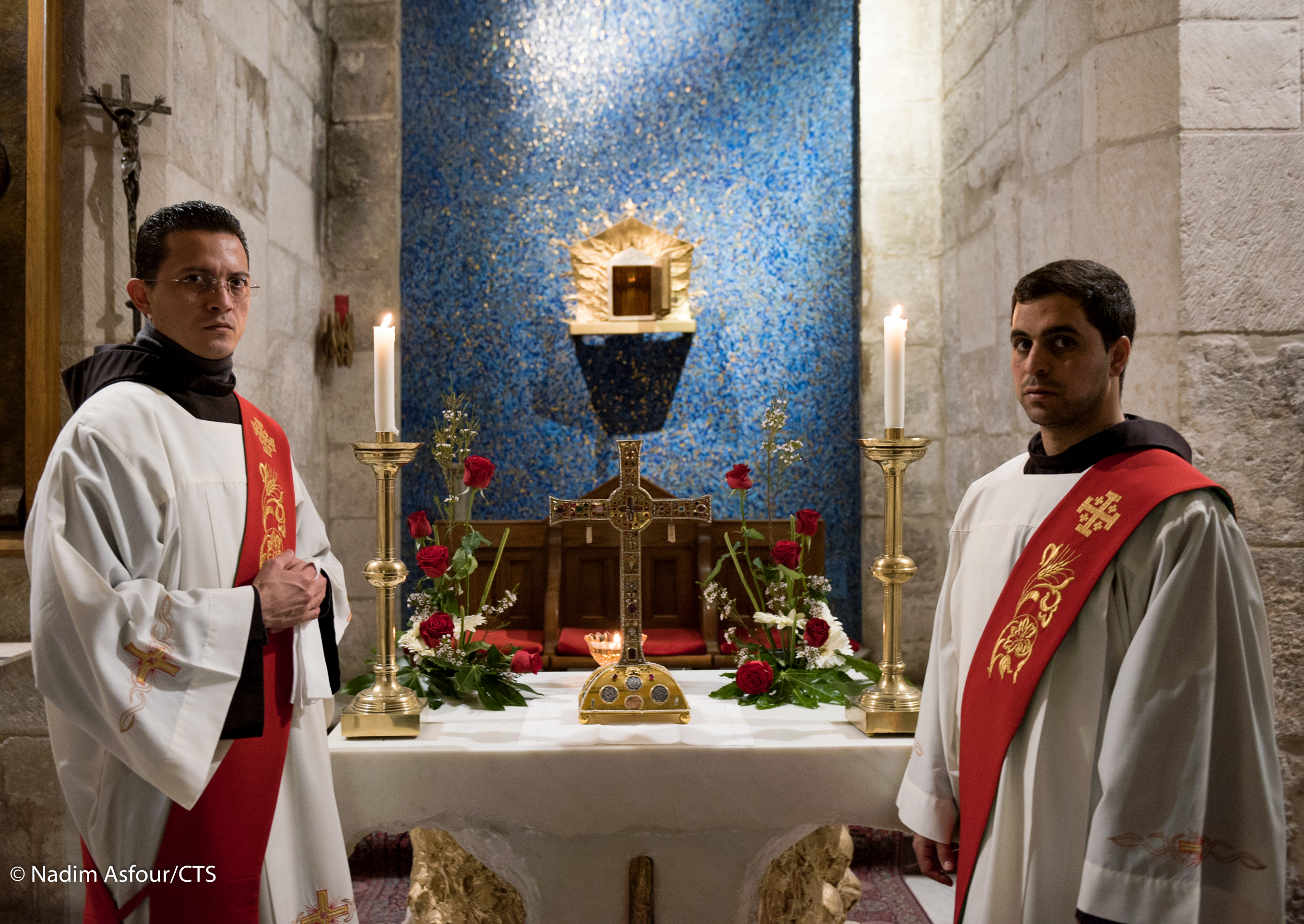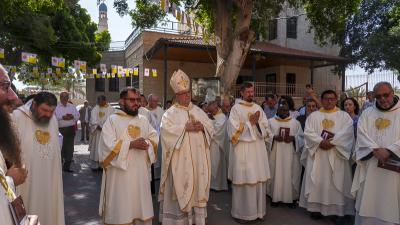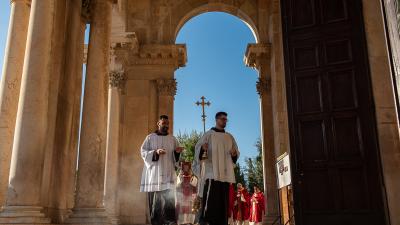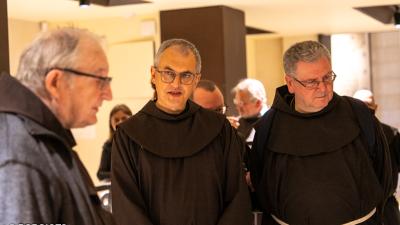
On the day of Christ’s sacrifice, the sky over Jerusalem was also dark. In the celebration of the Passion of the Lord, the Church stayed at Calvary in order to contemplate her Lord and Bridegroom’s cross. The morning ceremony, presided over by the Apostolic Administrator of the Latin Patriarchate, Mons. Pierbattista Pizzaballa, took place in three main moments: the liturgy of the word, the adoration of the cross, and the Eucharist. On this day and on the following day, until the Easter Vigil, the Church does not celebrate the Eucharist, as per ancient tradition, but communion is nevertheless given out. The priests wore red robes to highlight the Passion, [and] the faithful listened to the three-part proclamation of the last moments of Jesus’ life.
Mons. Pizzaballa carried the relic of the True Cross in the procession and all knelt down to venerate it and remember Christ’s sacrifice.
Immediately afterwards, Jesus’ journey to Calvary was retraced by a crowd of faithful. The Franciscan friars of the Custody of the Holy Land lead Via Crucis on the Via Dolorosa every Friday, and the Good Friday procession sees the participation of hundreds of people. From the place of the Flagellation, pilgrims and locals carry heavy crosses until reaching the Holy Sepulcher. At the fifth station, a group from the Latin parish of Jerusalem split off from the crowd and continued to go around the place of Christ’s crucifixion by themselves.
The Jerusalem parish had another afternoon appointment as well: Christ’s funeral procession through the streets of the Old City. Like a real funeral, the statue of Christ’s Dead Body was taken to the Christian neighborhood. But it was necessary to finish this popular rite on time for the official appointment at the Church of the Holy Sepulcher. Br. Marcelo Cichinelli, master of ceremonies for the Custody of the Holy Land, said that this procession has ancient origins: “We have witnesses that talk about the funeral procession to the Holy Sepulcher at the beginning of our Franciscan presence. Some chronicles say that it was already being done in the 15th century. We have a ceremonial book from the Holy Land from 1750 that talks about the funeral procession as we celebrate it now. The last form, therefore, is almost 250 years old.”
“We start from the Chapel of the Blessed Sacrament and every three stations we read a passage from the Gospel in different languages ,” explained the President of the Franciscan fraternity of the Holy Sepulcher, Br. Zacheusz Drazek. “For the last station, [we] walk up to Calvary and we begin to remember the crucifixion of Jesus Christ.”
The different languages in which the Gospel was proclaimed along the stations are those spoken by the Discretes of the Holy Land, the members of the governing assembly of the Custody of the Holy Land, each representing a different linguistic group. The custodial master of ceremonies explained the succession of languages: “First is Italian, then Polish (it used to be Greek, but we then changed it to a Slavic language), then German. At Calvary we read in English and then in French before the cross. Then, a song in Latin is sung. In front of the tomb, when Lord’s Body is laid, the last Gospel is proclaimed in Spanish.”
Thus the ancient tradition was repeated, like it has been every year on the same day for at least 250 years. Once Jesus was deposed from the Cross and was placed on a white sheet, the Custos of the Holy Land spread oils on Christ’s body right in front of the Stone of the Anointing. Then the Body was placed in the Tomb awaiting the Resurrection.
Beatrice Guarrera
3/30/2018




